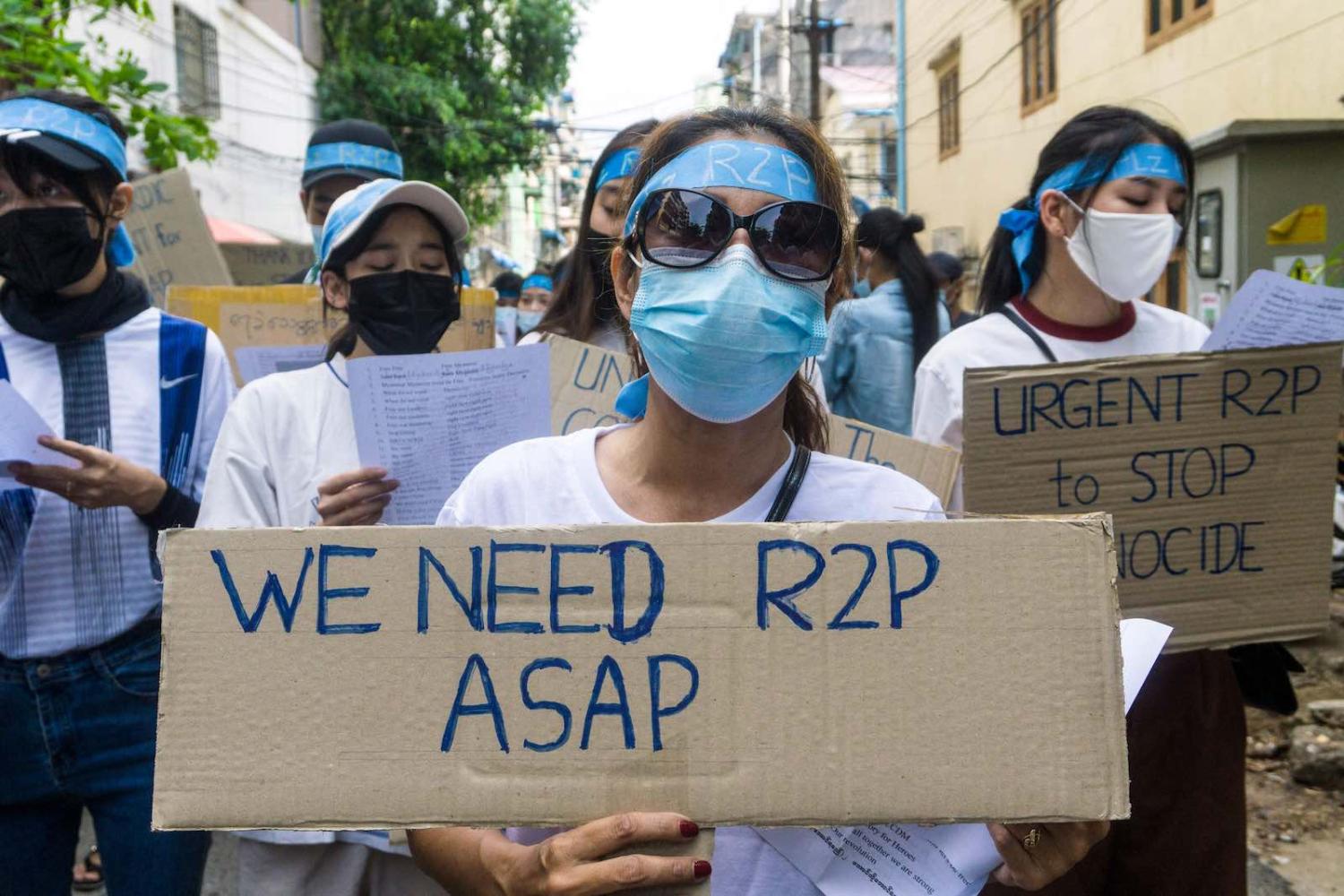Photo credit: STR/AFP via Getty Images
Context:
The Responsibility to Protect (R2P) is a global political commitment designed to prevent crimes against humanity. However, by labeling protection as a responsibility, powerful states are given the opportunity to frame their military intervention as the responsible humanitarian thing to do. Yet we know that there are always numerous viable, nonviolent, alternatives that are more responsible and effective means of protection. As Peace Science has shown, prevention is still the most effective approach. Resources and political will need to follow the already existing knowledge on violence prevention.
In the News:
“Amidst unimaginable human rights violations in countries such as Syria, Yemen and Myanmar, the international community is faced with a moral predicament how to react. In 1999, Kofi Annan stressed the responsibility to protect citizens of states, meaning that even though states are sovereign, they do not have a free ride to endorse or accept the suffering or killing of civilians. The concept of the ‘Responsibility to Protect’ (R2P), authorised after the United Nations (UN) World Summit 2005 attempted to resolve the contradiction between individual human rights and sovereignty. It became legitimate for the international community to intervene if a country does not fulfil its main duty, the protection of its civilians (United Nations 2018). However, humanitarian interventions remain highly selective (Hehir 2013: 156). Hence, positive assumptions around R2P are problematic and this essay demonstrates why. To do so, it will critically evaluate the consequences of R2P under the consideration of its efficiency to stop human suffering.”
“It is claimed that the uneven application of R2P can be explained best with the ‘humanitarian imperialism’. The main section of this essay critically compares the decisions of Western states regarding two examples where the world witnessed major human rights violations through the state. Cases examined will be the intervention in Libya 2011, and the non-intervention in Myanmar 2017. It is shown that the intervention in Libya was driven by neo-imperial and neo-liberal aims of the West, whilst the non-intervention of Myanmar can be explained through the satisfaction of Western states and China with the current Myanmar government. Consequently, the international community and particularly the West has only interests in intervening for the purpose of the protection of civilians if it corresponds to their foreign policy strategy. Lastly, this essay summarises the findings of the case studies and sets them in a broader context. It concludes that at best, the concept of R2P creates awareness for human suffering elsewhere but does not resolve the key issues. At worst, it works as a tool for the enforcement of neo-liberal and neo-imperial aims. Overall, R2P sheds a new light on interventions, but this does not contribute to an effective solution to end human suffering.”
Peace Science Insights:
Volume 1, Issue 4: “R2P: The Responsibility To Prevent“
The Responsibility to Protect (R2P) is a global political commitment to prevent genocide, war crimes, ethnic cleansing and crimes against humanity, endorsed by all member states of the United Nations at the 2005 World Summit. Labeling protection as a responsibility provides the opportunity for powerful states to frame their military intervention as the responsible humanitarian thing to do. Yet we know that there are always numerous viable, nonviolent, alternatives that are more responsible and effective means of protection. As research has shown, prevention is still the most effective approach. Resources and political will need to follow the already existing knowledge on violence prevention.
- Shifting focus from post-conflict protection to pre-conflict prevention is more effective and less costly.
- Once a violent conflict is underway, political barriers and high social and economic costs limit constructive options of violence prevention.
Volume 3, Issue 1: “Self-protection Strategies in the Eastern Democratic Republic of the Congo”
- Civilians use a range of strategies to protect themselves during armed conflict and should be treated as agents, rather than as passive recipients, of their own protection.
- To influence armed actors away from predatory behavior against civilians, communities in eastern DRC used the symbolic and/or material resources at their disposal to create leverage in negotiations with these armed actors.
- International actors should make better use of local knowledge in early warning systems, further develop capacities for negotiating with armed actors for civilian protection, and better scrutinize the state actors they choose to support as these may sometimes be sources of insecurity—rather than security—for local civilians.
References:
- “Mass Atrocities and Western Imperialism: Evaluating ‘Responsibility to Protect’” By Laura Ningelgen for TRANSCEND Media Service. September 10, 2018.
- Peace Science Digest:
- Volume 1, Issue 4: “R2P: The Responsibility To Prevent“
- Volume 3, Issue 1: “Self-protection Strategies in the Eastern Democratic Republic of the Congo”

